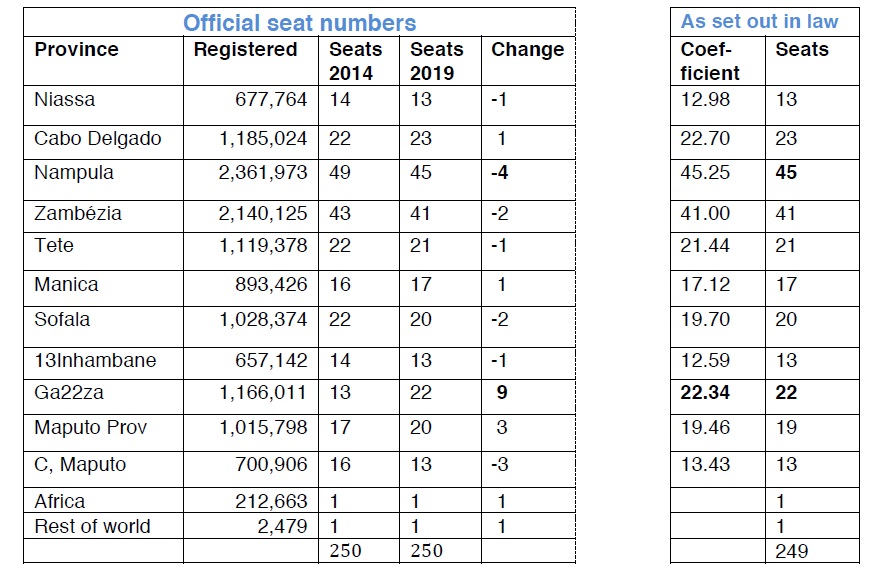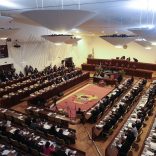Mozambique: Opposition criticise police over unsolved double murder, one year on
CNE muddies provincial waters – Gaza (& Frelimo) gain 9 seats; Nampula, Zambezia and Sofala lose 9

There will be district lists for the provincial assemblies (AP), even though parliament abolished them, the National Elections Commission (CNE) announced Monday. The law itself is confused and the CNE has further muddied the waters.
Under the old law, the constituency for the AP (provincial assemblies) was the district, with district lists composed of local people registered to vote in the district. The new agreement with Renamo means that the governor is the head of the electoral list which gains the most votes. The old system had no single provincial list. So the new law (article 6 of law 3/2019) says the constituency is the entire province.
The confusion comes from the rest of article 6, which says that to maintain “representative democracy”, 85% of seats are to be distributed to districts by the d’Hondt system. But if districts are no longer constituencies, how is that to be done? The law says that the CNE must “materialise” article 6.
The CNE announced on Monday morning that there will be separate district and provincial lists. CNE spokesperson Paulo Cuinica told this bulletin that to be on a district list the candidate must be registered in the district. Does the instruction to “materialise” article 6 give the CNE the right to imposed an additional condition on candidates which is not in the law?
When asked how votes were to be counted, Cuinica would not say. He only said a directive would be issued soon. Under the current laws, votes are counted for the constituency – which is now the province for both national and provincial parliaments. Seats are allocated to parties in the constituency under the d’Hondt system and candidates are elected in order from a single party list. But if there are both provincial and district lists, how is this to be done? How to select candidates from district lists based on a provincial count? Or is the CNE allowed to return to the district count of the old law? The law gives no guidance and the CNE remains mute. The provincial waters are now even more murky.
Gaza gains 9 seats; Nampula, Zambezia and Sofala lose 9
The number of parliament seats for each province were announced Sunday by the CNE. As predicted here, Frelimo-dominated Gaza gains 9 seats while Renamo-majority Nampula, Zambezia and Sofala lose 9.
It was announced at the Monday press conference that the CNE voted to approve the seat distribution by 11 to 5, with Frelimo and allies voting in favour and opposition voting against. The opposition argues that the Gaza registration is impossible and is gerrymandering by Frelimo. The 2017 population census said there were 750,000 voting age adults in Gaza, yet the CNE said 1,166,000 registered – 400,000 more people than census takers found.
Of the 250 seat parliament, 248 seats are distributed by province according to the number of registered voters. The remaining seats are one for Mozambicans in Africa and one for Mozambicans in the rest of the world.

Final registration statistics are posted on the CNE-STAE Facebook page https://m.facebook.com/CNE.STAE.Mocambique/
CNE-STAE does not use its website.
Registration by district is available HERE
By Joseph Hanlon
ALSO READ: CNE approves voter registration results by 11 votes to 5, no abstentions – AIM report












Leave a Reply
Be the First to Comment!
You must be logged in to post a comment.
You must be logged in to post a comment.